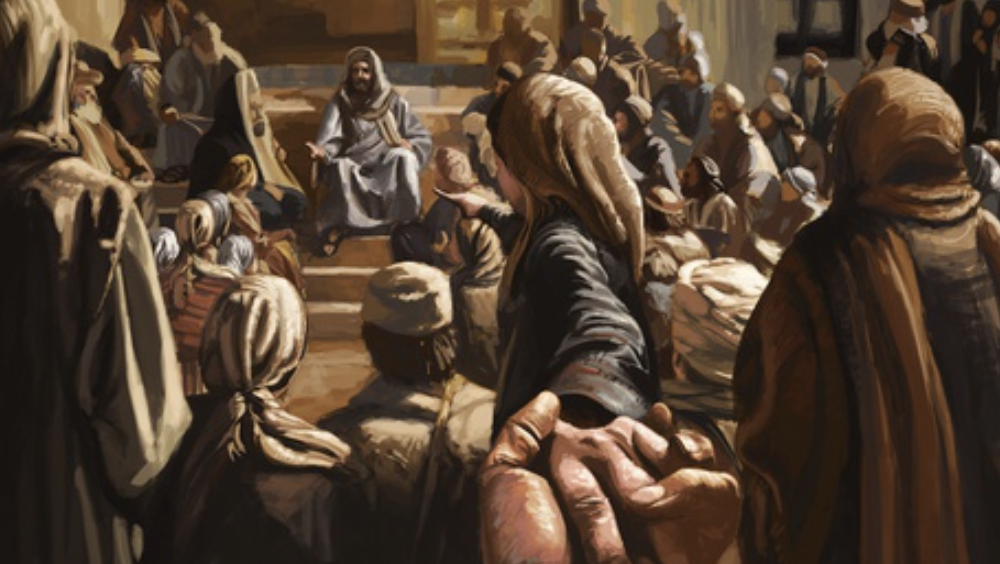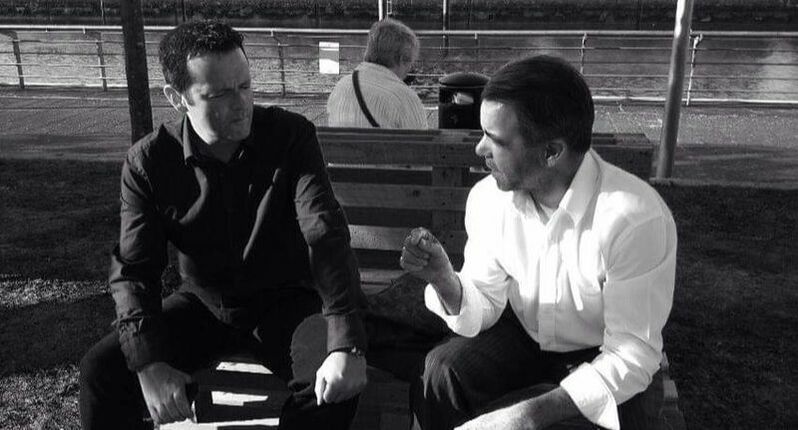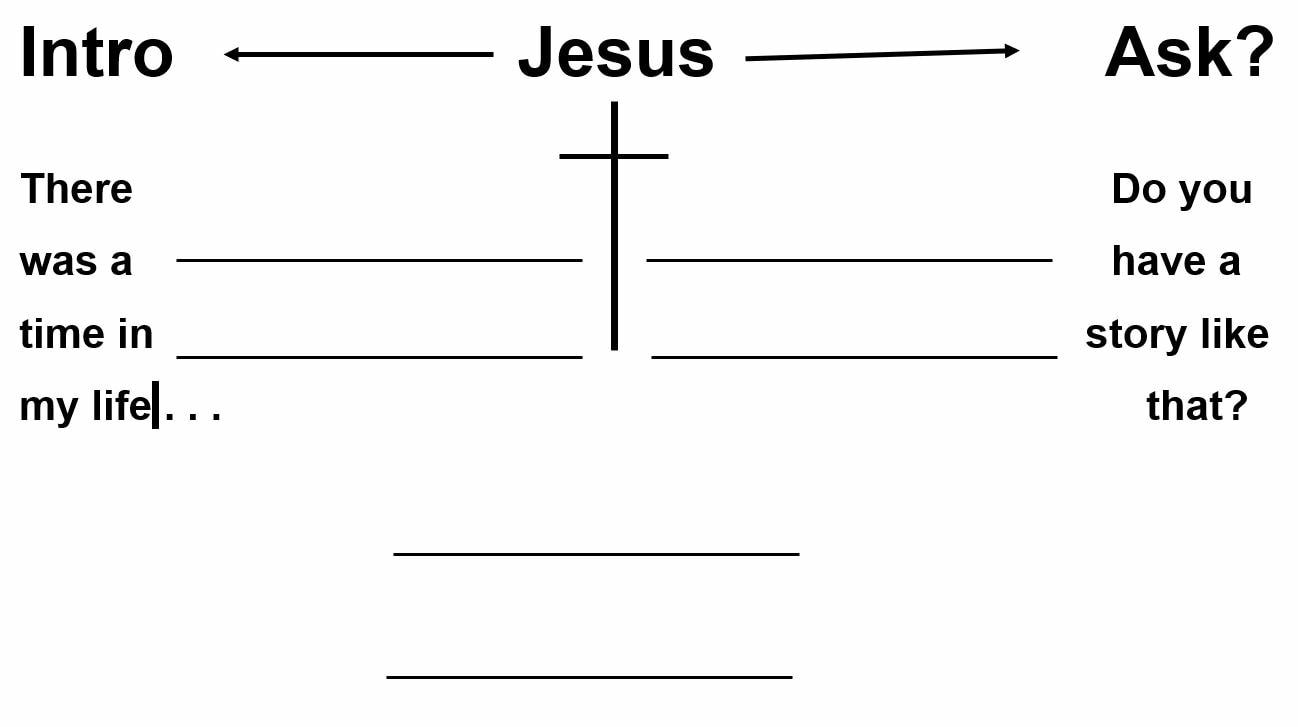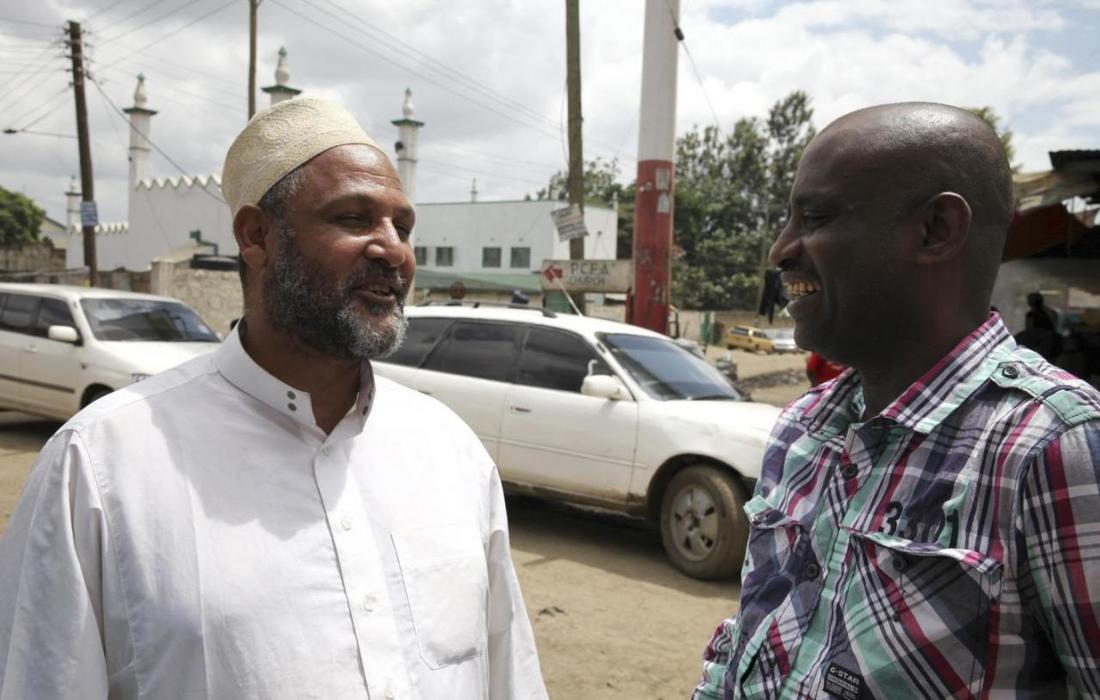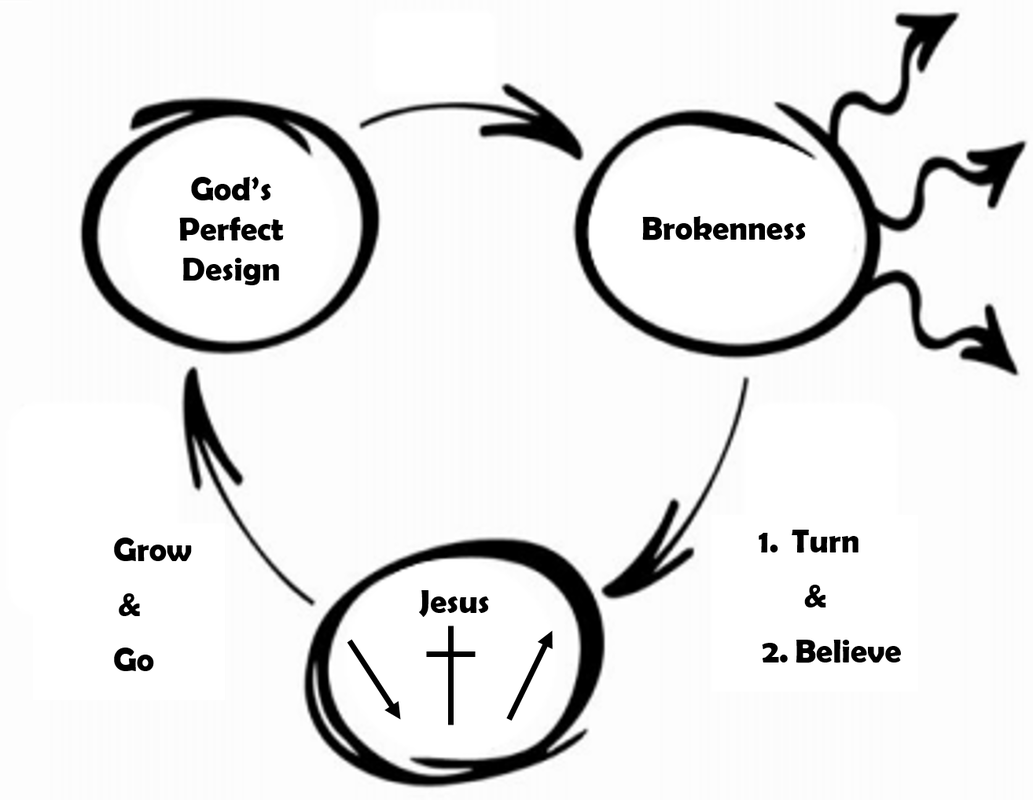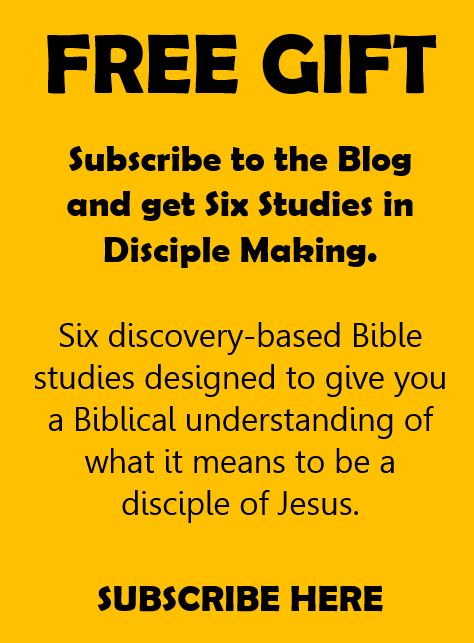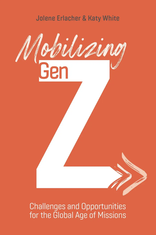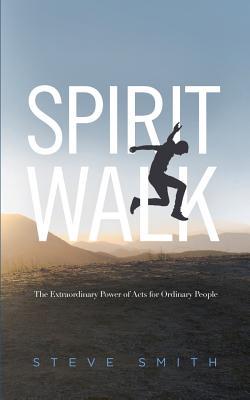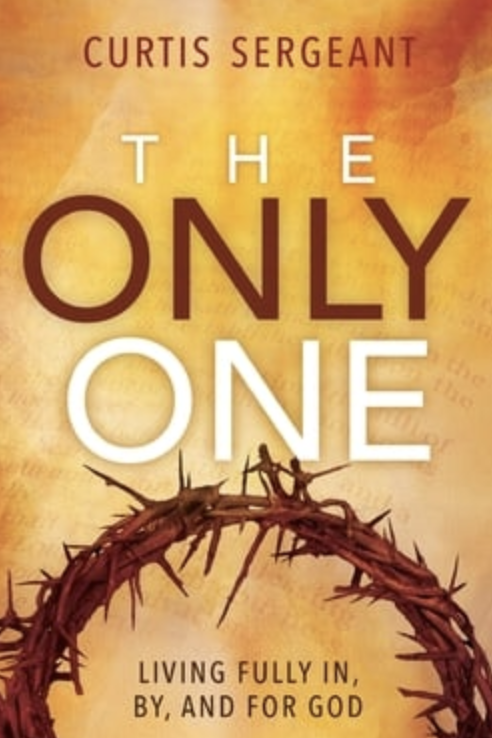|
“I can’t see anything dad.” My seven year old son squeezed my hand ever tighter as we both recognized the obvious truth of his statement. He and I along with my wife and five year old daughter had scrambled up the canyon wall in the Cappadocia region of central Turkey where we were hiking and had climbed into the entrance of a man made cave, a tunnel actually, that angled back into the cliff face and into what we knew from our guidebook was probably a complex of tunnels and rooms; the ancient homes of an ancient people. We had walked the sandy path for nearly twenty yards when we came to a right hand turn. The tunnel was four feet across and just over five feet tall, a rectangular shaft cut straight and true. A few steps into our right turn and we had run out of light. There was a shadowed outline of what appeared to be another tunnel or perhaps a doorway a few feet further into the gloom but beyond that we could see nothing. Darkness stretched out before us. I crouched to rest my bent back and together we discussed our options. We had taken a tour of an amazing underground city the day before which had ignited the flames of our inner explorers. Unfortunately, while none of us wanted to turn back, we didn’t have a flashlight. The flip phone I had at the time didn’t have a flashlight and the gray green glow of its one inch square screen gave barely enough light to see our hands in front of our faces. What we did have was our compact digital camera which had a flash. It was worth a try and so I pointed the camera into the smothering darkness and took a picture. In an instant the tunnel burst into light and just as quickly receded back into darkness. In that moment however we had seen a vision of the future; there wasn’t just one doorway on the left, there were three evenly spaced entrances off of the main tunnel we were in, a tunnel which disappeared ahead in a distant darkness. Dragging my hand along the wall, we made our way into the darkness until we came to the fist cleft in the sandstone. Another flash and we knew it was the entrance to a small and rather insignificant room. The next was the same but the third entrance led into a room that had a very large and rather deep pit carved into its floor. From our tour the day before we knew this had most likely been used to store grain in ages past, however the possibility of stumbling into one of these deep pits was unnerving. We squatted for another conference, reiterating to the kids to stay together and agreeing to not take any unnecessary risks. We proceeded another thirty yards or so when we noticed light ahead. We made our way forward and found a tunnel returning to the face of the cliff. It was another way out and it brought both relief and courage. We turned back into the darkness and continued to explore. When we ventured deep enough, the light was non-existent and we rarely knew what was beyond the edge of our flash. Ten feet at a time, we wandered this complex of tunnels and rooms, discovering what felt like ancient secrets, including a large room where we imagined the community gathering for meals or worship. Fear and joy mingled as we spent the next hour chasing the light into the darkness. As I read the Biblical stories, it seems that in many ways, faith is the simple act of chasing light into the darkness. When Moses’ mother coated a papyrus basket with tar and pitch she was simply taking the next step of faith. She hadn’t seen the whole story but in faith, she had followed the flash of God’s grace into the darkness. Moses’ sister had only seen a glimpse of a better future but she knew her God and so she took tentative, faith-filled steps into the river where she waited, standing in the shadows, standing in the muck and mire of the river, standing in the light of expectation. Joseph’s dream was followed by a pit and slavery and prison but he held on to hope, trusting that God was working behind the scenes and would remain true. When the twelve disciples watched their risen Lord ascend into heaven, the great commission was still ringing in their ears. Go and make disciples of all nations. The whole world was the vision Jesus had given them and yet they had no budget, no buildings, and no infrastructure to speak of. They did have a promise, that Jesus would be with them until the very end of the age, and they’d spent three years watching Jesus do the work of His kingdom and so they simply moved forward into the next thing God showed them. The story of the book of Acts is the story of the disciples peering down dark tunnels expectantly looking for the light to flash. They lived with a deep trust that God was working and that His kingdom would expand. They knew beyond a shadow of a doubt what they were supposed to do - Go make disciples of all nations - but they didn’t necessarily know how it would get accomplished. They prayed and planned and took daily steps of faith, all the while trusting that God was orchestrating His will. As the disciples took those daily steps of faith, God stepped with them into their context to infuse it with His power in His timing. It is the faithfulness of the disciples that is paramount. The planning was helpful. The strategies were important. But as Andy Stanley points out, “believers with vision live with the knowledge that “how” may come about independently from their planning. But it will not come about apart from their faithfulness. Faithfulness is critical to success.”* This is the pattern I watch weekly in the volunteers who serve in Crescent Project’s Embassy ministry which I help lead. Embassy works to equip followers of Jesus to go into the online spaces where Muslims congregate. There they build rich, lifelong friendships through which they’ll have the opportunity to share the good news of Jesus as they share their lives. Every interaction is an act of faith. The will of the Father is clear - He desires that none should perish so he sent his only begotten son to seek and save the lost and to give His life as a ransom. In Jesus is life and that life is the light for all mankind. While the vision of the Father is clear, how it will actually come about is another question all together. Meaningful scriptures shared with Muslim friends are met with smug comments that give no hint of interest in the gospel. Honest probing questions are deflected and avoided. For many of our volunteers it can be a long, bent-backed slog through tunnels of darkness as Muslim friends respond with seeming indifference. And yet as we look to the scriptures we find hope that the Father is drawing people to Christ. He is at work behind the scenes whether we realize it or not. Seeds are planted which the Holy Spirit will water in His time. This truth was highlighted in the story of a young lady from Central Asia. One of our Embassy volunteers had been laboring for nearly two years, meeting only indifference and the needy immaturity of a nineteen year old teen wanting to learn English even as she became a sort of surrogate aunt for this young lady. But then Covid-19 spread across the globe carrying in its wake a growing sense of anxiety and fear. This young lady was swept into a dark tunnel of despair and insomnia. And then suddenly a light flashed in her heart as the prayer of our volunteer struck a nerve. A prayer in Jesus' name broke down a door of insomnia. A prayer in Jesus’ name brought a bright calm into a heart swirling in the darkness of increasing anxiety. An invitation to read the scriptures was hesitantly accepted and a few months later this young lady placed her trust in Jesus. The blinders fell off and she stepped into the light. It is a truth that you can can almost certainly trace back through your own journey of faith. Someone took a risk to share with you. Someone stepped through their fear to point you to the truth. Something happened that in the moment seemed like disaster. Faith always requires the active pursuit of light into darkness. The writer of Hebrews reminds us that “faith is confidence in what we hope for and assurance about what we do not see”. We rarely know what lies on the other side of the darkness, but as we take steps of faith, as we move forward in prayer and hope, as we step into the light - even the dim flashes born of our weak faith - God shows up. * This quote is from Andy Stanley's book, Visioneering: Your guide for discovering and maintaining personal vision (2016). Multnomah Publishers. (pg. 58) Learn more about Crescent Project and Embassy. image credit Did you find this article helpful? Share it with a friend.
0 Comments
In the first few chapters of John an interesting pattern emerges. The numbers of those following Jesus begins to grow as his followers simply invite their friends, family or, in the case of the woman at the well, entire village to "come and see."
To be sure, none of those activities are wrong and God uses all of them to help people come to faith - they are simply not the example of Jesus' first followers in the first four chapters of John (John 1:39; 1:41-42; 1:45-46; 4:28-30). For them, "come and see" was enough. It seems they knew that if they could just get their friend to spend some time with Jesus - even a cynic like Nathanael - that would be enough. And Jesus is still enough today. Like his first followers, we can ask our friends to come and see Jesus by sharing the stories of Jesus from the gospels and by inviting them to read these stories. We can do this by inviting them read through one of the gospels with us or we can invite them to into a discovery Bible study using one of several story sets:
My default has been to invite people to church or to open up deep philosophical conversations with my far from God friends. God has of course used both of these tactics, but increasingly I'm learning (and trying to learn) to default to simply asking them to come and see Jesus for themselves by inviting them to read the gospels with me. How about you? How have you been inviting people to Jesus lately? Did you find this post helpful? Share it with a friend. If you have had the opportunity to listen to more than a few testimonies of people who were raised in lostness and came to faith, you have probably started to notice a couple of themes. One of those themes is the importance of a follower of Christ in their life. They met a Christian who through word or deed or both had an impact on their journey toward faith. Another that often comes up is the power of the word of God to bring conviction and give hope. In reading the Bible, they met a God who loved them enough to send his one an only son to save them from their sin, from fear and shame and from death.
In the scriptures, they met the living God. With this article, I want to provide tools to help you help your friends begin to explore the Bible and learn from the scriptures themselves. The Bible is both the greatest evangelistic tool that we have as well as the foundation for disciple making. Story Sets are apowerful tool to help your friends read the Bible. Story Sets A story set is a set of Bible stories that focus on a particular topic or theme. These can be used as a basis for exploring the Bible with your friend. Story sets are most often narrative in nature which allows pre-believers to enter into the story of the Bible and into discussion with you around the character and will of God. The purpose of story sets is to get people quickly into the scriptures, and to begin to teach them how to read the word of God. How To Use Story Sets As you connect with people who are far from God or if you are working with new believers, it will be natural to talk about the things that are important to our lives. There will be events in life that you will want to celebrate with your friends. There will be challenges in life that come up for which your friends will be looking for guidance. You will find yourself talking about the bigger questions of the meaning of life and the nature of God. Story sets give us a framework for introducing the word of God into these discussions. For example, let's say you are having a conversation with a young mother and she says, “I got into parenting before I was ready. Other people make it sound so easy. My mother just laughs. My grandmother says everything will be okay. But I’m trying to raise my kids without a map. Please help.” You could respond, “I’ve found a lot of guidance for parenting in the word of God. I’ve been so thankful that God gives us examples of parenting in the Bible. I wonder if you would like to read some of these stories together and see what we can learn from them.” You could then find or create a story set and read through a story each time you meet. Here is an example of a "New Parent" story set:
This particular story set finishes out by pointing not just to some good examples and lessons for parents, but with the story of Abraham and then the return of the prodigal son. Like this one, most story sets are evangelistic in nature, giving guidance for life while also pointing to Christ. One of the most commonly read story sets in the Muslim, Hindu and Buddhist world is Creation to Christ, a collection of stories, starting in Genesis, that give a general overview of the story of the whole Bible. Choosing The Right Stories How do we know which story set is the right story set to read with each of my friends? This is a discernment process that begins with prayer. Pray often for the opportunity to read the Bible with your friend. Pray for wisdom to know what stories in the Bible are the ones that will meet the felt needs of our friends and meet them where they are at. Choosing a story set also involves good listening. If we care about our friends, then we will be asking about their lives and as we get to know them, we’ll begin to hear the issues with which they are struggling. Then we can create or find an appropriate collection of Bible stories for their particular need. How To Read The Stories Isaiah 55:11 says, “When my word goes forth, it shall not return empty or void, but will accomplish the thing for which I sent it.” This is an amazing promise and it encapsulates why it is so important that we help our friends begin to read the scriptures. God will do the work! A process to read the Bible that missionaries around the world are finding to be fruitful is the Discovery Bible Study. It is a simple process that allows the Word of God and the Holy Spirit to be the main teachers. You don’t have to have all the answers but can trust that as you read the Bible with your friends, the Holy Spirit will guide them. It also begins the disciple making journey even before they come to faith as you model with them how to read the word of God and apply its teachings to your lives. [Learn more about Discovery Bible Study] The Discovery Process 1. Before you jump into the Bible story, be sure and spend some time connecting with your friend. How are they doing? How are their father and mother doing? How is work going? Spend time being with them. Don’t neglect this opportunity to extend hospitality. Share the week's highs and lows with one another. 2. Next turn to the passage. Read the passage aloud with your friend. Re-read it 3-4 times. Really! Re-reading helps ensure that they are actually getting into the passage. 3. Work together to retell the story in your own words. Don’t explain or interpret. Just retell the story. This provides an opportunity to make sure they are understanding the story and creates an opportunity to hear the story one more time. It also gives you and your friend practice in telling others the story. We want to be able to go home and say to a friend or family member, "Let me tell you the story I learned today." If in the process of your discussion your friend says something that is obviously not in the story, just ask the simple question, “Where do you see that in the passage?” 4. Next begin to discuss the following discovery questions:
5. Work together to think about what you can do this week to apply what you have learned in the passage. It can be helpful to actually write down an “I will . . . “ statement. 6. Spend time thinking about other people in your life who you could tell the story to this week. Ask, “Who can you tell this story to this week?” 7. Last question -- When can we meet again? Set a time to connect again and to read the next passage in the story set. Story Set Collection The following story sets are for you to use with your friends. Most are story sets that others have created and we have collected to share with you here. These should give you an idea of how you could create your own story sets to respond to the felt needs of your friends or disciples. 54 Trial DBS Series The parenting story set above comes from this great resource. I'd originally seen this collection of stories on a website which is no longer active. Thankfully my friend Chuck sent me a copy he received from a friend who was connected with Jerry Trousdale. This is a collection of 54 stores divided into nine major categories with six sets of six stories each. It is a really amazing resource. You can access this story set HERE. Creation to Christ - Long Version Beginning with Genesis, this study examines how God's plan of redemption unfolds throughout the Old Testament. It leaves the reader expectant for the fulfillment of the many prophecies found throughout the scripture. You can access this story set HERE. Creation to Christ - Short Version A modified, shorter version of the original Creation to Christ set. You can access this story set HERE. Stories of Hope A series of seven stories that introduce the reader to Jesus. You can access this story set HERE. Signs of John A series of seven stories that introduce the reader to Jesus. You can access this story set HERE. Learning to Follow Jesus A series of stories that allow you to disciple a new believer into the basics of following Christ. You can access this story set HERE. Other Story Set Resources
As we immerse ourselves in the story of the scriptures, we allow the Holy Spirit to use them to shape our view of the world, of ministry and of ourselves. Scripture hammer trainings allow a trainer to step out of the way and allow the Bible to do the heavy lifting of the training. They require little charism on the part of the trainer, are hard to argue with and place a tool in the hands of those we are training that is immediately reproducible.
The basic idea is to create a list of scriptures that all point toward the basic Biblical principle or lesson you are wanting your trainees to grasp. A scripture hammer study is best done in groups of 2-5 and then debriefed as a group. You can create your own for any topic you'd like to train on. I've created a one page handout with six scripture hammer studies that I've learned from others and that I've been using to train. The focus of these particular studies are:
[CLICK HERE TO DOWNLOAD THE SIX STUDIES] I've written previously about a few of these topic and you can check those out at the links below: In John 4, Jesus talks with a Samaritan woman at well outside of her town. During this interaction, the woman begins to suspect and even believe that Jesus might be the prophesied messiah. Leaving her water jugs, she rushes back to her community where she proclaims, “Come see a man who told me everything I did. Could he be the messiah?” We don’t know a lot about this woman, but the result of this simple statement is that the people of her villiage come out to see Jesus for themselves and many believed. Jesus spends two unplanned days with the townsfolk who end by saying, “We no longer believe just because of what you [the woman] said; now we have heard for ourselves, and we know that this man really is the Savior of the world.” [read the story here] We have learned to use this story as a teaching tool at our E2E training events. It answers a few questions to help us share the gospel:
The woman goes back to her community; her friends and family and acquaintances. This is her relational network. And our own relation networks are who we can begin to share with and for whom we should be praying regularly [Read: Personal Prayer Strategy]. The woman shares two things. The first is a one sentence summary of her story. The second is a question pointing to the gospel. Those are two ways we see the good news shared in the New Testament: personal testimony and gospel presentation. These are what we can share. And when does the woman begin to share? After her seminary training? After her confirmation class or new members class? No. The woman begins sharing immediately! She has discovered good news and she will not be stopped. With today’s article we want to look at that middle question: What do we share? We’ve previously written about a helpful tool for sharing the gospel called The Three Circles. There are a lot of great gospel sharing tools, but this is one we train people to use at E2E events. We also train everyone how to share their story in 15 seconds. This is just a smidge longer than the Samaritan woman’s testimony but the purpose is the same: to invite people to learn more about Jesus. This is something we’ve learned from the No Place Left coalition. We use the diagram below as a teaching tool to help shape our 15 second testimonies. There is also a great training video that I’d encourage you to watch both to craft your own 15 second testimony but also to have as a tool to train others. We aren't using the 15 second testimony to explain the fullness of the gospel. We use it to open up spiritual conversations that give us a chance to hear someone’s story and to invite them to come and discover Jesus for themselves. [Read an example of how this was shared] Crafting Your 15 Second Testimony
Watch the video below and allow Troy Cooper to train you to share your 15 Second Testimony. Your Assignment
It was noon and I was meeting my new friend Musa* for an hour over my lunch break. We’d decided to meet at our favorite coffee shops to connect. I’d first met Musa when he had reached out looking for someone to practice his English with. He’d had a lifetime of classroom instruction in his home of Cairo, Egypt* but had few native English speakers with whom he could practice. The first time we met we covered the bases of getting to know one another. Where are you from? What is your family like? What do you like to do in your free time? The sounds of Arabic were all around him in the busy Cairo coffee shop where he sat. I then asked Musa what he did for a living. He is a young guy, in his early twenties and had just gotten started working as a mobile phone app developer. Then he returned the favor and asked me what I do. I’m in full time ministry so this is always an interesting question to answer. But I dove in. "I help people in churches in America understand and follow Jesus. That is pretty broad but it involves teaching, training, coaching, encouraging and casting vision with leaders and regular people. I'm not going to get rich, but I do find tremendous fulfillment in doing the things that I believe that God has made me to do. I bet that sounds a little crazy, but that's what I do and really it's who I am." I could tell He didn’t completely understand what I was talking about so he asked a few more questions but then moved on, wondering if I’d been to Turkey. He’d recently visited Istanbul and loved the city. I told him of our four and a half years living there and how much we loved the people we knew there. We meandered in and out of topics and then he asked a serious question, “I hope to hear an emotional situation you have been through?” I thought for a few minutes and then told him about a recent struggle I’d been facing and about how our family had spent time praying for God’s wisdom and healing. It was good to be transparent with my new friend even though it felt a bit hard and I wasn’t sure he was following everything. Musa’s English is good but he hasn’t had a lot of experience talking about personal topics. When I was finished, I said, “What about you? Have you been through any hard situations in life?” Musa was contemplating his answer when he looked at his watch. He gave me a wry smile. “I’ll have to tell you next time. I’ve got to go now. But let’s make sure and meet again.” As Musa left, I wondered about our conversation. Had I said too much about what I do? Should have I asked more questions about his faith and beliefs? Should I have offered to pray for him before he left? What if I had said something wrong? I spent some time praying for our time together asking the Lord to use it for his glory and to reveal himself to Musa. And then I removed my headphones and shut down Facebook Messenger on my laptop computer. I got up from my seat in the corner of my coffee shop in South Dakota, grabbed my mug and headed up to the counter for a refill. Though we were half a world away, Musa and I had enjoyed a great cup of coffee and better conversation. We continue to connect regularly, oftentimes just texting back and forth, sometimes hopping on a video chat to say a quick hello and at other times, setting aside an hour to grab a cup of coffee for an extended talk. To my surprise, Musa had quickly moved into questions of faith. I’ve introduced him to Discovery Bible Study and we are slowly working through a creation to Christ story set. We read a passage of scripture - I paste it into Messenger and he reads the Arabic and I read the English. We then ask some simple questions to help us discover what the story says about God, about people and about how we should live our lives. It’s been slow because Musa often brings up his own questions - questions that are stretching me and forcing me to dig into my own faith and theology. We started with his questions about the Christian idea of a triune God. We’re now pressing into the validity of the Bible. And those conversations are packed in between talk of family and culture and food and movies and dreams for life. It’s a whole lot of fun. I am the only true follower of Jesus that Musa knows. I’ve been able to pray for him and continue to pray for him regularly. Musa is one of many young guys that I am connecting with online all across the Muslim world and someday, I hope I will be able to meet all of them in person, if not in this life, then in the eternity of heaven. That is my prayer for each of them. There are 1.7 billion Muslims in the world today and collectively, Christians are sending one missionary into the Muslim world for every 405,000 Muslims.[1] This has to change. John Stott has said, “We must be global Christians with a global vision because our God is a global God.” Because of advances in technology and the globalization of our world, millions of people throughout the Muslim, Hindu, Buddhist, Animistic and un-religious worlds are working to learn English. They are going online to try and find people with whom they can practice speaking. A new door of missionary activity has opened and it is open to everyone who is a follower of Jesus and has an Internet connection. Geography is no longer a barrier to your relationship with a Muslim like Musa. C.T. Studd said, “If Jesus Christ be God and died for me, then no sacrifice can be too great for me to make for Him.” Will you sacrifice an hour a week to invest in a relationship with a young man or woman in the Muslim world who is looking for friendship and someone to practice English with? Let Us Help You
*For security, names and places have been changed. 1 - http://www.thetravelingteam.org/stats Are you using "Shema" statements to start spiritual conversations? One of the tools that I was trained to use to help start spiritual conversations with non-believers was the "Shema Statement". The Shema is the passage of scripture found in Deuteronomy 6:4-9: “Hear, O Israel: The Lord our God, the Lord is one. Love the Lord your God with all your heart and with all your soul and with all your strength. These commandments that I give you today are to be upon your hearts. Impress them on your children. Talk about them when you sit at home and when you walk along the road, when you lie down and when you get up. Tie them as symbols on your hands and bind them on your foreheads. Write them on the door frames of your houses and on your gates.” If we follow the example of scripture and believe that God is drawing people to himself (John 6:44), then the more shema statements we make with strangers, the more likely we are to discover the people that God has been preparing to hear the truth.
The basic idea of the Shema Statement is to make statements in our conversations with the people we meet each day that naturally lead to spiritual conversations. The idea is not to share the full gospel but rather to say things that lead to conversations that lead to sharing the gospel. It is through making shema statements that we can find the people who are seeking the truth. Here are some examples of Shema Statements:
Again, these statements are not said to share the full gospel. We say them prayerfully and then listen prayerfully for the response of the person we say them to. Some will not respond at all. Some might respond negatively. But others - those God has been preparing - will respond in ways that lead to further conversation and opportunities to share about Jesus and what He has done in our lives. Application
Learn it. - Apply it. Share it. Today. Read More: http://globalfrontiermissions.org/shema-statement/ Shema Statements are one of the tools we train everyone at Everywhere to Everywhere events to use and then we go out and practice using them. Come to our next E2E event or bring it to your city. [learn more] When you read the gospels and the book of Acts, one thing stands out - everyone is talking about Jesus. Boldly. In fact the idea of bold proclimation of the gospel comes up in nearly every chapter of the book of Acts. Regardless of risk or response, it is what those following Jesus did. They seemed to believe that if the sowed the gospel broadly, they would reap an abundant harvest. They seemed to believe that when Jesus said the harvest was plentiful, he was telling the truth. They believed and trusted in the gospel. Sometimes when my pastor shares a story about sharing the gospel with someone he's met on a plane or at a gas station, others will say, "He's so gifted at sharing the gospel." While my pastor is a truly gifted man in a lot of different aspects of life and ministery, I usually take a moment to disagree with that statement. You see it's not so much that he is gifted at sharing the gospel, it's that he is sharing the gospel. He sows abundently and guess what, he reaps more abundantly than most. It is as Jesus and the scriptures say it is. Wayne Gretsky once quipped that he missed 100% of the shots that he never took. And so as followers of Jesus, we need to find ways to share the gospel. We are to be His witnesses (Acts 1:8) and to be His ambassadors (2 Corinthians 5:20) and both of those require us to say something. The outcome is in the hands of the Holy Spirit and not for us to worry about. We just need to share. One tool that I have been taught that I have found to be very helpful is the Three Circles tool for sharing the gospel. I like it for a number of reasons but mostly because it is simple enough for my 12 year old to be able to use. Some might push back saying that it is too simple - fair enough. If you want to add Bible verses or other things, you can certainly do that. But the reality of someone coming to faith is not dependant on a perfect gospel presentation - it's dependant of the Holy Spirit's work in the heart of the one who is lost. Four Spiritual Laws, Roman's Road, The Way of the Master, the Cross Diagram - they all work. Not because they are somehow the perfect presentation of the gospel but because people of faith use them. When we step out in faith to enter into gospel conversations, God shows up. Below are a number of examples of the Three Circles Gospel presentation. Jimmy Scroggins, who developed the Three Circles tool, has a great five video training series which is really helpful. CLICK HERE TO START TRAINING NOW! Three Circles in other languages: (Spanish, Japanese, Russian, Russian, German, Chinese, Nepali, Italian, Turkish, Urdu, Arabic) |
The E2E Community
Categories
All
Good Books
Archives
April 2024
|
Proudly powered by Weebly


